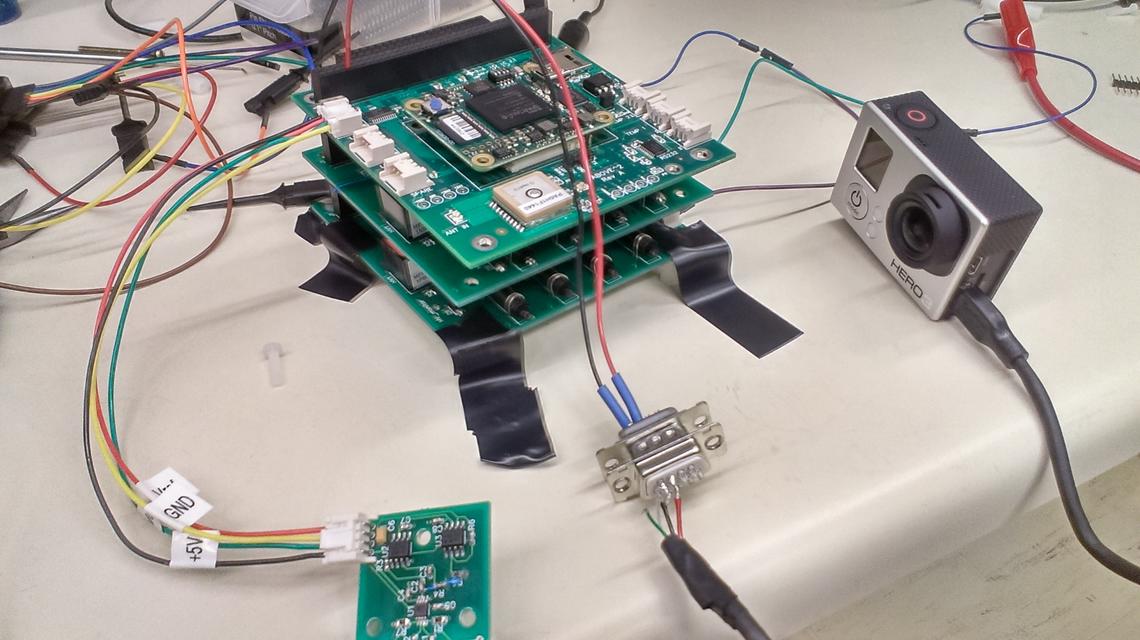Sept. 15, 2015
Students design and build device for NASA-backed research balloon

Gamma ray detectors, high-energy particles, and a four-million cubic foot stratospheric balloon — this isn't a description of a UFO sighting over the New Mexico skies. In fact, the massive balloon in question is very familiar to a group of students in the Department of Physics and Astronomy (PHAS).
The students built an intricately crafted instrument which was one of 12 devices affixed to the balloon and launched as part of a collaborative space research initiative out of Louisiana State University (LSU) on Sept. 7.
Under the leadership of Chris Cully, assistant professor in the physics and astronomy department, the Calgary arm of the Student Organization for Aerospace Research (SOAR) conceived of and built the device. It's equipped with a gamma ray detector, a camera, and a radio to detect lightning. The payload was attached to the balloon, which had a NASA receiver on board.
“We’re looking to detect high energy particles in lightning — something that has been theorized for 10 to 20 years, but nobody has really looked into it yet,” explains Candice Quinn, a student and summer research assistant in PHAS and SOAR club president.

This payload device was designed and built by the students to observe lightning sprites.
Armando Davalos
Students among first Canadian representatives in American-based project
The University of Calgary contingent was among the first group of Canadian university representatives to contribute a device to LSU’s High Altitude Student Platform (HASP). By providing a space test platform through a partnership with the NASA Balloon Program Office and the Louisiana Space Consortium, HASP encourages student research and the development of student satellite devices and other space-engineering products.
Creating the device was a true collaborative process, which took several months to put together, and one in which the students had true leadership over.
“Most of the decisions were made by us,” says student Cooper Duffin. “Chris was as hands-off as possible.”
The students led every aspect of the device’s creation, from building its software and firmware to testing it in a vacuum chamber to make sure it could withstand the stratosphere’s extreme temperatures, which can range from -50 to over 60 C. As another student Marc Russel explains, “the stratosphere has one of the nastiest environments you could put anything into.”

Cooper Duffin observes preliminary data shortly after the balloon was launched at 3:30 a.m.
Matthew Patrick
Balloon's successful flight provides good research data
Several members of SOAR travelled to New Mexico for launch day, where the four-million cubic square foot, 2,000-pound balloon was launched from the Columbia Scientific Balloon Facility base in Fort Sumner.
“We were hoping for a flight that flew the full flight time and that we'd have lightning within atmospheric attenuation proximity,” says student Robin Williams. “The flight was a record long flight that went nearly twice as long as expected and flew over storms almost the entire time.”
Despite being slightly longer than anticipated, the flight was successful. After just over 23 hours, NASA sent the command to terminate the flight, and the balloon came down over the New Mexico desert. The research experience, and the opportunity for collaboration and camaraderie was appreciated by the group.
"The major takeaways will hopefully be good research data, as well as a hope for future potential opportunities for University of Calgary students to get more involved in aerospace, research, and opportunities to meet industry experts,” says Williams.
“I am really proud of the students’ work,” says Cully. “They put together a really great instrument.”
The University of Calgary is driving advances in earth-space discovery for better environmental monitoring and global communication networks as part of the New Earth-Space Technologies Research Strategy. The strategy is meeting growing opportunities to apply new knowledge and new technologies for insights into the exponentially growing volumes of data from digital imaging, sensor webs, SCADA, and geospatially referenced data to influence environmental stewardship, satellite technologies, mission design, space instrumentation and our understanding of the origins of Earth and the solar system.

From left, Cooper Duffin, Candice Quinn, Dain Galts, Liz Roy, Matthew Patrick, Robin Williams.
Matthew Patrick
